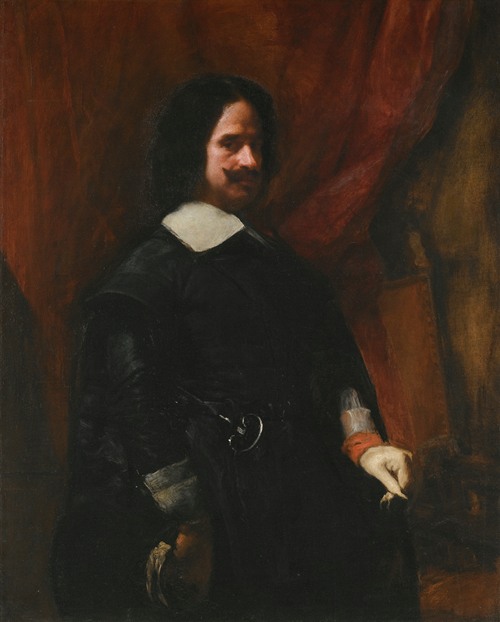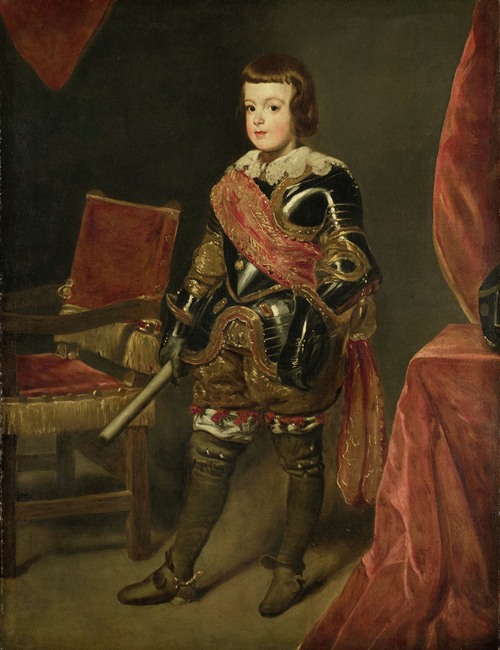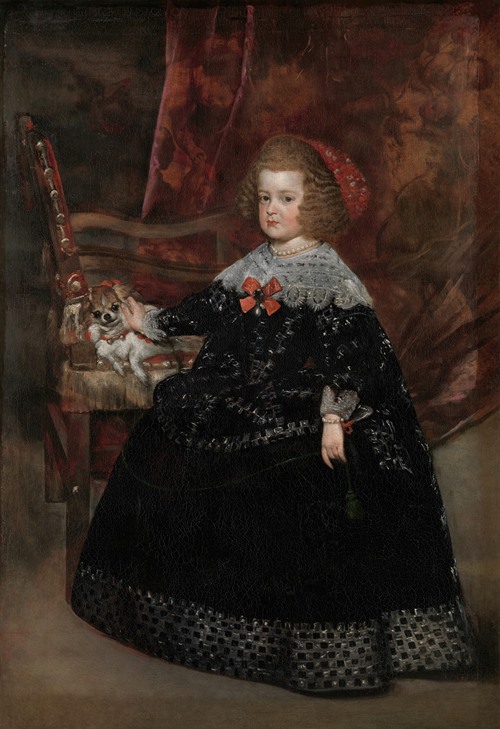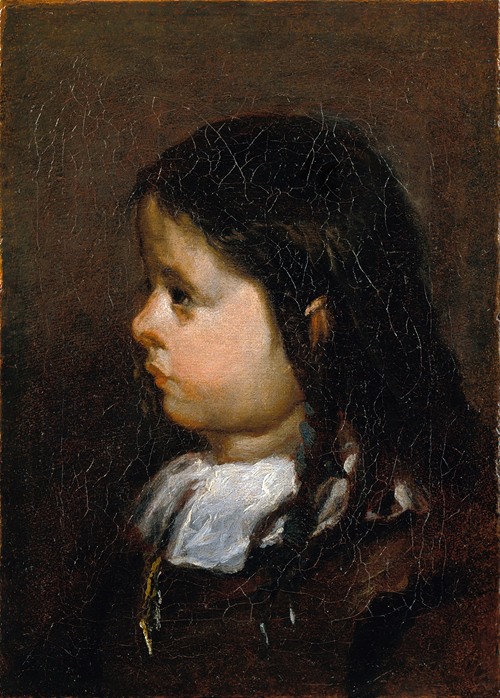
Juan Bautista Martínez del Mazo was a Spanish Baroque portrait and landscape painter, the most distinguished of the followers of his father-in-law Velázquez, whose style he imitated more closely than did any other artist. A fine painter himself, Mazo was a master of landscape, as proven by his most celebrated work View of Saragossa.
Little is really known about Mazo's early life. The date and place of his birth are uncertain. Apparently, he was born in Cuenca, as his parents, Hernando Martinez and Lucia Bueno del Mazo, were from that province. However, some sources consider Madrid as his native city. The date of his birth has been estimated around 1612 since it is known that his mother was born in 1596 and he married in 1633 when he probably was in his early twenties.
The whereabouts of his training remain a mystery. He must have been in Velázquez's workshop sometimes before his marriage, so it is quite possible that he had been his future father-in-law's apprentice. Mazo married the famous painter's only surviving daughter, Francisca de Silva Velázquez y Pacheco, on August 21, 1633, at the Church of Santiago in Madrid. Philip IV and the Prime Minister, the Count-Duke of Olivares, served as the couple's sponsors. The marriage was the event that guaranteed Mazo's future success at Court. Velázquez immediately arranged a royal appointment and on February 23, 1634, he transferred to Mazo his position of Usher of the King's Chamber, with the permission of the King. From this it can be assumed that Mazo was then already a disciple of the famous painter, and from that date he was closely associated with his father-in-law with whom he lived and collaborated. Velázquez furthered Mazo's career with a steady hand and secured palace appointments for him and later for Mazo's children.
In 1643, Mazo became Master of Drawing and personal painter of the heir to the Spanish Crown, Baltasar Carlos, Prince of Asturias, who in 1645 became godfather of his fifth child. Prince Baltasar Carlos commissioned him to copy hunt scenes by Paul de Vos, Rubens, Jordaens and other Flemish painters. Mazo accompanied the prince to Aragón in 1646. During this trip, he painted the famous View of Saragossa and a last portrait of the young prince who died unexpectedly at the age of sixteen. After the death of the prince, Philip IV decreed that the perquisites that Mazo had been receiving be continued, and kept him employed as a painter.
Mazo first expressed his talent copying works of Venetian masters in the royal collections, such as Tintoretto, Titian, and Paul Veronese, a task that he performed with assiduity and success. His colorful work as a copyist opened his way to the secrets of the great masters of his time, especially Rubens and Jordaens. Such copies must have considerably cut down the time available for his original work, as did the production of replicas of Velázquez's royal portraits that he painted; an example would be his portrait of Infanta Margaret Theresa that today is exhibited next to the Velázquez original in a Viennese museum. Nevertheless, Mazo still felt free to follow his own bent for brilliancy of execution and true-to-life naturalism.
Mazo rarely signed his works, which furthered the confusion with the work of Velázquez, making it difficult to separate the authorship of their paintings. In fact, there are few extant paintings that scholars agree are his; these include View of Saragossa (1646, Prado); Portrait of Queen Mariana in Mourning Dress (1666, National Gallery, London); and The Family of the Painter (c. 1660–1665, Kunsthistorisches Museum, Vienna). He has some of his works in the Prado, near those of his mentor.
Although Mazo acquired great skills as a portrait painter, some of his most interesting works are hunting pieces and landscapes in which he developed a more personal style with a respect for reality. They are animated with a multitude of figures treated with extreme detail. His landscapes are works of great observation as exemplified by his paintings View of Saragossa and Stag Hunt at Aranjuez – both were commissioned by Philip IV. He also painted some still lifes. In 1657 Mazo traveled to Italy trying to recover the dowry of his eldest daughter Ines who had become a widow in Naples. During this trip, Mazo painted The Arch of Tito that shows the influence of Roman landscapes.



